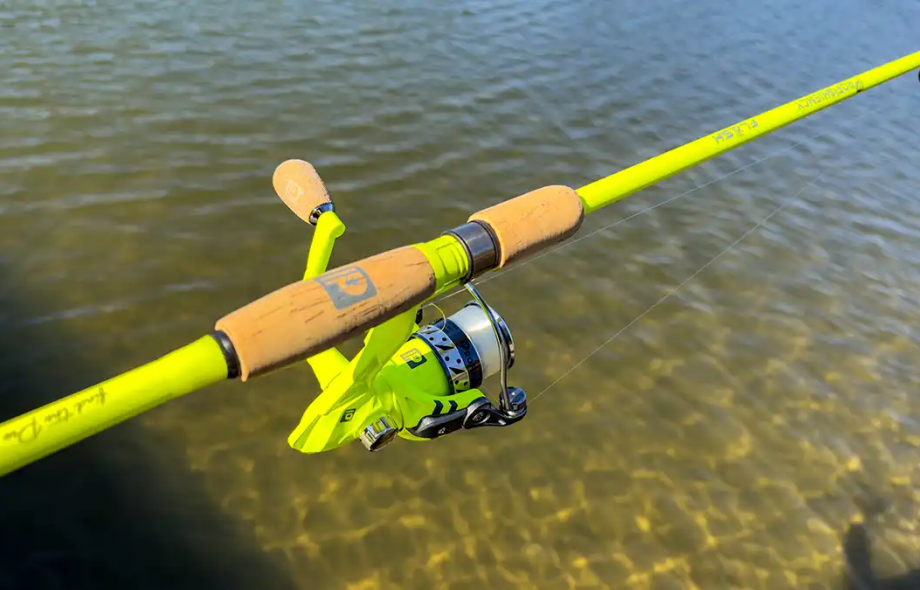Each and every odd registering out-of-waters begins with a cast, where preparation meets possibility. Whether you walk a forested stream or ride waves over open water, an excellent spinning rod and reel combo can make the difference between a trip worth forgetting and a trophy catch worth telling a story about. With many options lurking in close range, how would you single out that one perfect combo for your requirements? Let’s cut to the chase with some basics to help sail through this crucial decision.
Setting the stage: Before buying, know the basics about spinning rods.
Never perceive a fishing rod just as a tool to apply force: it is an extension of your instincts. The three principal factors equally dominate when evaluating spinning rods: length, power, and action.
Length: A rod length from five to nine feet affects how far you can cast and the amount of control you handle over the casting action. Shorter rods, 5′-7′, are good in tight spaces or demanding precision, for example, flicking a lure just below an overhanging branch. Longer rods, 7′-9′ or more, cast farther, ideal for surf fishing and covering large water bodies.
Power: This term simply signifies the resistance of a rod against bending. Less-power rods will be fishing small species, such as trout or panfish. Medium-heavy to heavy rods will be fishing about to bigger species: bass, pike, or saltwater giants. Always match the power of the rod with your target species; otherwise, your line may snap, or the rod may be too weak to do its job.
Action: This feature refers to the location of the rod’s bend and varies from slow (bends near the handle) to fast (bends near the tip). Fast action gives high sensitivity for fast hook sets while moderate-action rods give flexibility while fighting fish with positive pulling.
The Engine: Choosing a Good Reel
A spinning reel is a workhorse; it executes smooth retrieves and manages line tension. The factors to consider when selecting any particular reel will be size, gear ratio, and drag system.
Size: Reel sizes go from 1000 to 6000+, and they represent the line capacity and torque. Smaller reels (1000–3000) should be paired with light-power rods for finesse fishing. Larger reels (4,000+) are for heavy setups for saltwater or big-game scenarios.
Gear Ratio: A higher gear ratio (e.g., 6.2:1) provides faster retrieval of line. With jerk baits or topwater lures, this is what you want. Lower ratios (e.g., 5.2:1) supply more power while cranking deep-diving lures or fishing the bottom.
Drag System: A drag system will maintain steady pressure throughout the fight, so the drag of your reel and how it operates should be trustworthy. If you do a lot of saltwater fishing, get a reel with a drag that’s sealed and corrosion resistant.
Perfectly Matched: Fishing Rod and Reel
The synergy of the rod and reel enhances the functionality taken as a whole. Improperly matched combos cause fatigue, difficult casting, or potential failure of the gear. Use the following steps to make sure there’s synergy:
Balance Test: Grab the combo as it is assembled. Your reel should never tip the rod, make it feel too heavy, or give instability feeling. Well-balanced feels less tiresome after a few hours of fishing.
Line Weight Compatibility: Check what’s recommended on your rod for line weight (e.g., 6–12 lb test); your reel should either be spooled with a line with correspondingly low weight, or high test line if it’s very lightly rated. More importantly, don’t put a heavy line on a reel that usually takes light line-it’ll hurt your casting.
Intended Use: A lightweight fresh-water combo setup for trout won’t make the grade in a redfish scenario. If the species encountered for you is vast, go for a more versatile setup; a medium-power rod with fast action, paired with a 2500-size reel, works well in a broad range of odds and ends.
Application-Oriented Suggestions
Every spinning rod and reel scenario depends on fishing surroundings and goals:
Freshwater Finesse: 6’6” light-power rod with fast action + 1000–2000 reel. For trout, crappie, or small bass with 4–8 lb line.
All-Around Versatility: 7’ medium-power rod + 3000 reel. For bass, walleye, and inshore species with 8–14 lb line.
Saltwater Power: 8’ medium-heavy rod + 4000–6000 reel. For surf casting or tarpon fighting, with 20–30 lb braided line.
Maintenance: Keeping Your Investment Protected
The best spinning combo works only until it’s maintained. Rinse any saltwater uses off reels with fresh water, lubricate the gears once a year, and keep an eye on those rod guides for cracks! Store rods vertically to avoid warping.
The Last Cast: Make a Difference in Your Fishing
The quest for the best spinning rod and reel combos is not a quest for the most expensive fishing rig, but an activity in aligning equipment with your objectives. A focus on good balance, good application, and durability allows you the opportunity to make every cast worthwhile. After all, the excitement of fishing lies not necessarily in the catch but in the assurance that your rig is ready-strong-willed, hands-on-gear, for whatever happens next.
And as you build your setup, keep in mind: the best anglers are those who adapt and learn, letting their gear echo their passion. Tight lines!
 :
https://www.pinterest.com/petvethealthcare/
:
https://www.pinterest.com/petvethealthcare/

